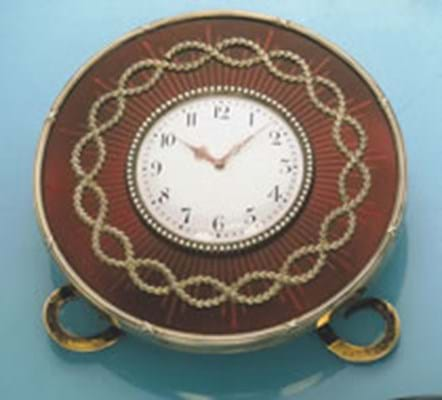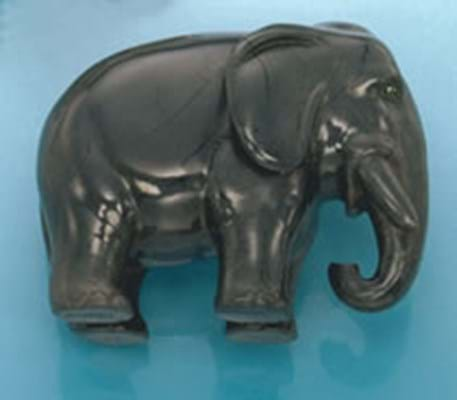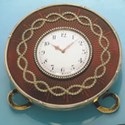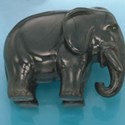One of the main talking points at the three-session sale held by Christie's (21.52-12.91% buyer's premium) at the Baudrutt Palace Hotel on February 16 was a 30-lot ensemble formerly owned by Countess Anna Mueller Grocholski (1909-2004).
The countess may not have been to the forefront of the jetset glitterati, but, hors piste, she covered some ground.
She grew up in Finland and Belgrade; worked in Saigon, Shanghai and Tokyo; possessed Russian, German and Swiss nationality; lived in New York and Zurich; and married four times en route. Such cosmopolitan glamour helped her collection - expected to bring SFr1m - rustle up SFr1.67m (£752,000).
Although her jewellery was imbued with what Christie's termed "almost barbaric splendour", a couple of Fabergé pieces aroused especial interest.
A silver enamel and seed pearl, 4in (10.5cm) diameter, clock made in St Petersburg around 1900, and bearing the workmaster's name of Michael Perchin, sold to a European collector in the room at SFr85,000 (£38,300) against an estimate of SFr7000-9000.
Another piece, though not catalogued as by Fabergé, was, felt Christie's after late research, from the master's workshops. This was a Kalgan grey jasper elephant, 3 1/4in (8.5cm) long with green garnet eyes. It sold on the phone to an anonymous European buyer for SFr35,000 (£15,770) against an estimate of just SFr1500-2500.
Although the racy countess was born in Russia, there were no Russians in the room, in contrast to the corresponding sale in 2004. This may help explain the failure of the sale's top lot, a pendant featuring a mighty 63.52ct rectangular-cut diamond within a pavé-set sapphire surround. Christie's had been looking for SFr2.75m-3.5m (£1.25-£1.55m) for a piece they thought tailor-made for the Russian market.
It seems the Russians had hit St Moritz early this season in order to celebrate the New Year. That's the belief of Mathias Rastorfer of the Cologne-based Galerie Gmurzynska - which specialises in the Russian avant-garde - and who opened a state-of-the-art exhibition space opposite the Palace Hotel a year ago.
François Curiel, head of Christie's international jewellery department, admitted that he "wasn't over the moon" about the failure of the 63.52ct diamond - but he was delighted to have outsold Sotheby's in St Moritz for the fifth consecutive year, by SFr12.4m (£5.59m) to SFr9.2m (£4.14m).
HOWEVER, Sotheby's (21.52-12.91% buyer's premium) also had reason for satisfaction.
Their smaller sale at the Kulm Hotel on February 17 (307 lots compared to 476 lots at Christie's) was 82 per cent sold by value: the figure at Christie's was 67 per cent, reflecting the failure of their main diamond. Each firm achieved a volume take-up of just over 75 per cent. Both remarked on continued strong demand for exceptional diamonds and, although private buying is traditionally stronger in St Moritz than in Geneva, there were four trade buys in the top 10 at Christie's and five at Sotheby's.
Why a mighty diamond cut no ice with the Russians in St Moritz
This year’s jewellery sales in the upscale Swiss winter resort of St Moritz – an annual fixture since 1995 – again fomented plenty of interest among the well-heeled private clientele in town at the height of the skiing season.








